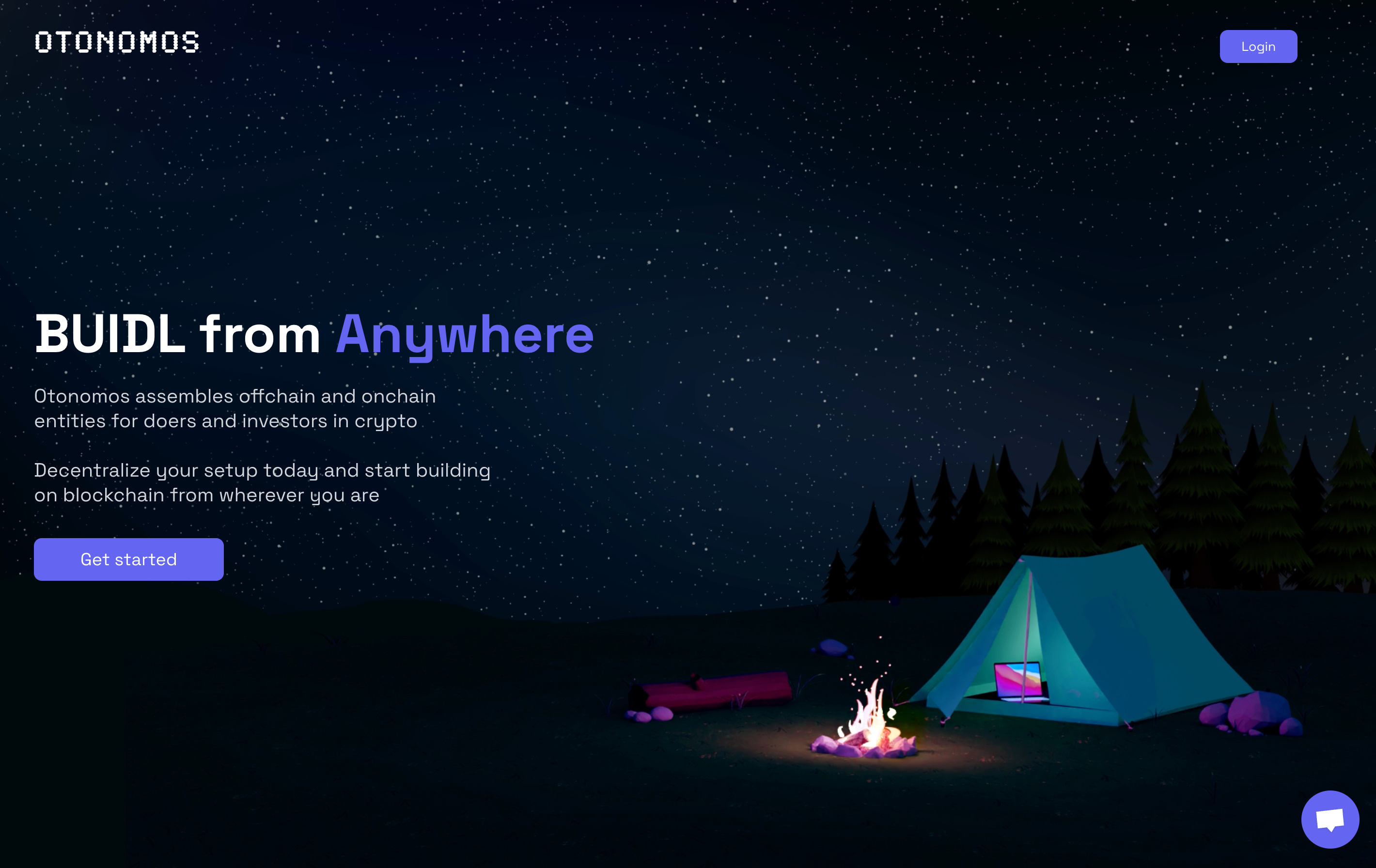Since the launch of its new site in January this year, Otonomos has seen a significantly higher proportion of its orders come through online.
We remain the only “e-commerce” formation agent that lets users order entities online à la carte, build their order, and check out their basket in either crypto or fiat.
In addition to various ERC20 stables, ETH itself and also ZEC and XMR, Otonomos recently added SOL as a crypto payment method to cater to the Solana community’s need for legal entity stacks. This is in addition to fiat payment methods by card and bank wire.
NEW! Staging engine
What’s new in our next upgrade is the staging of your order via the Login button top right.
We use Magic.Link as a secure login method which is also futureproof for Web3 logins further down the line.
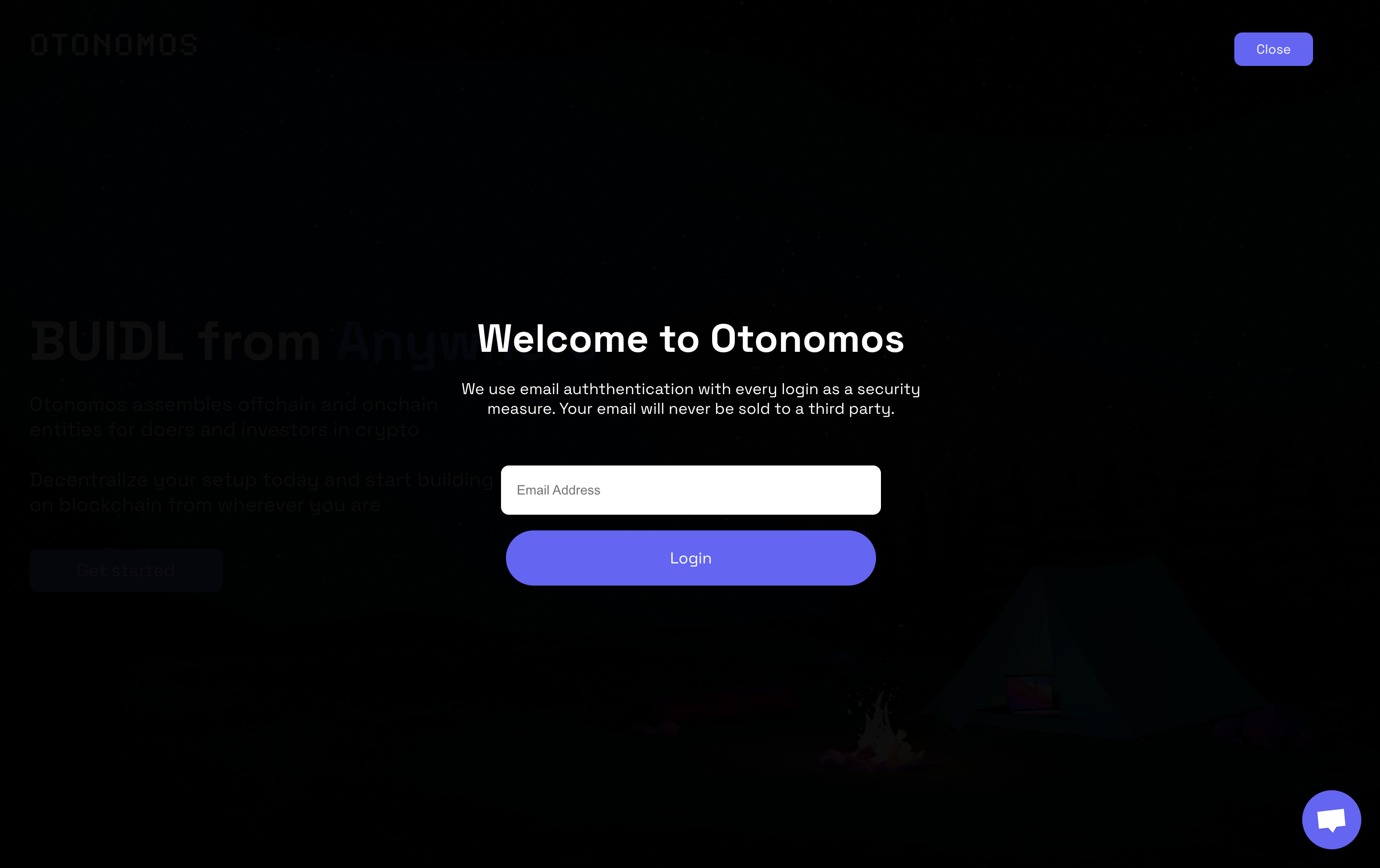
As many of you will know, Magic Link sends a login link to your email. Simply click on it and provided you placed an order with Otonomos or are an exiting client, you will be logged in to Otonomos.
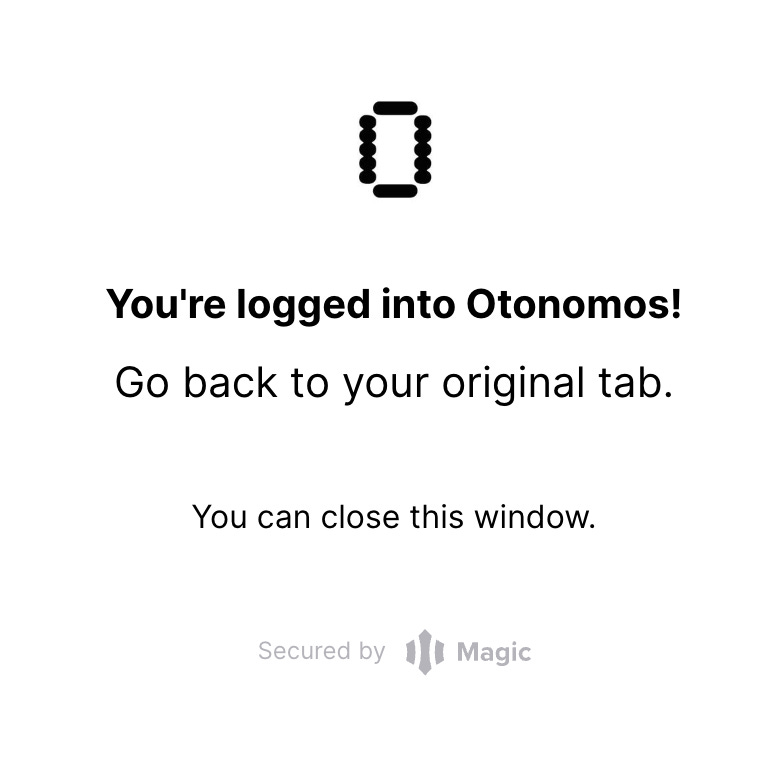
The landing screen will be a Feed for announcements together with an overview of your entities. (Note: The screenshots below are fictitious and taken from our test website).
This screen will be the major cockpit for your entities as we add functionality in future releases. The menu in the left pane shows the current functionalities.
Start staging engine
Click on “Build your entity” to complete your new order, in this case a U.S. LLC in New York:
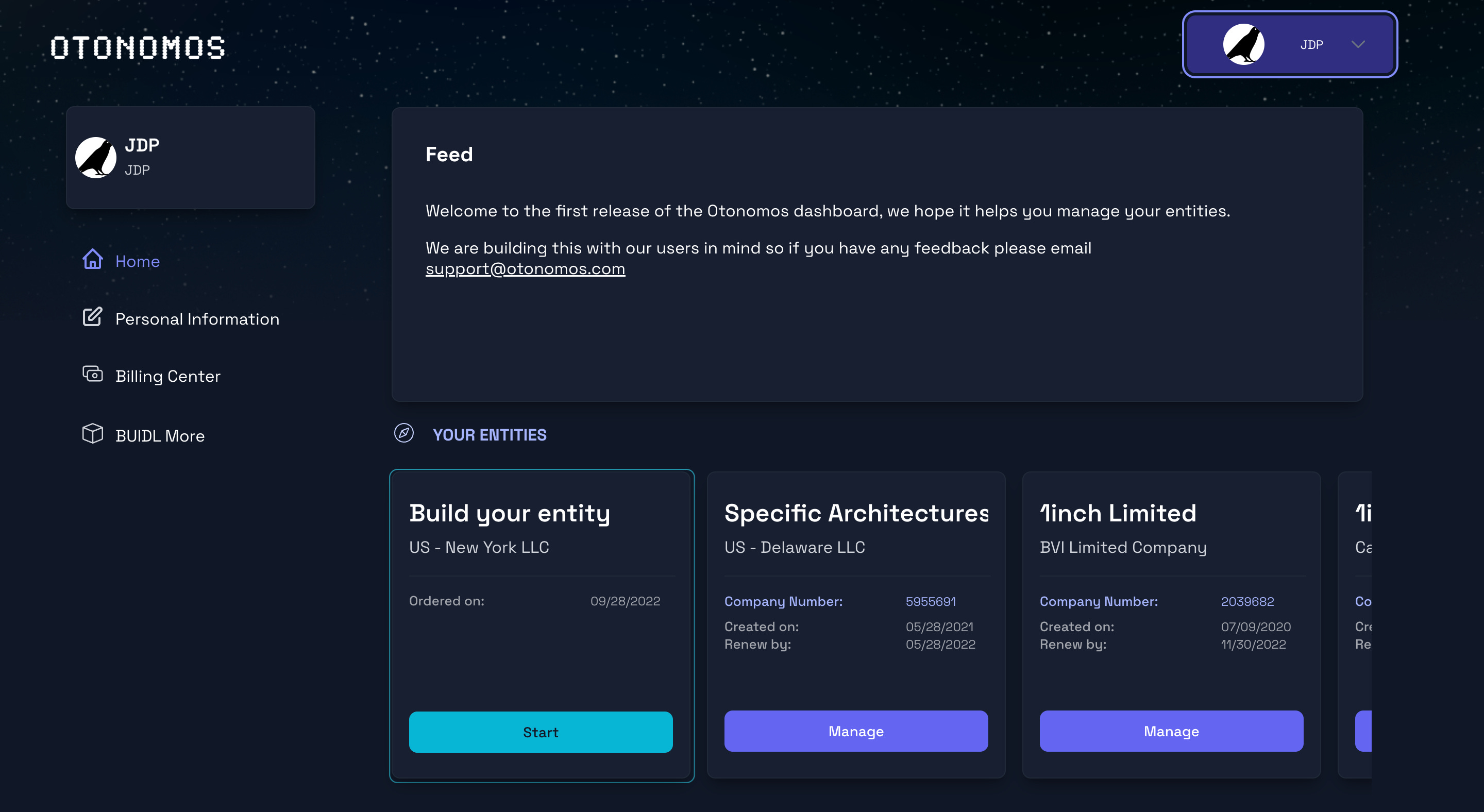
You are now in the first stage of your company staging, which will ask you to provide three preferred names for your new entity:
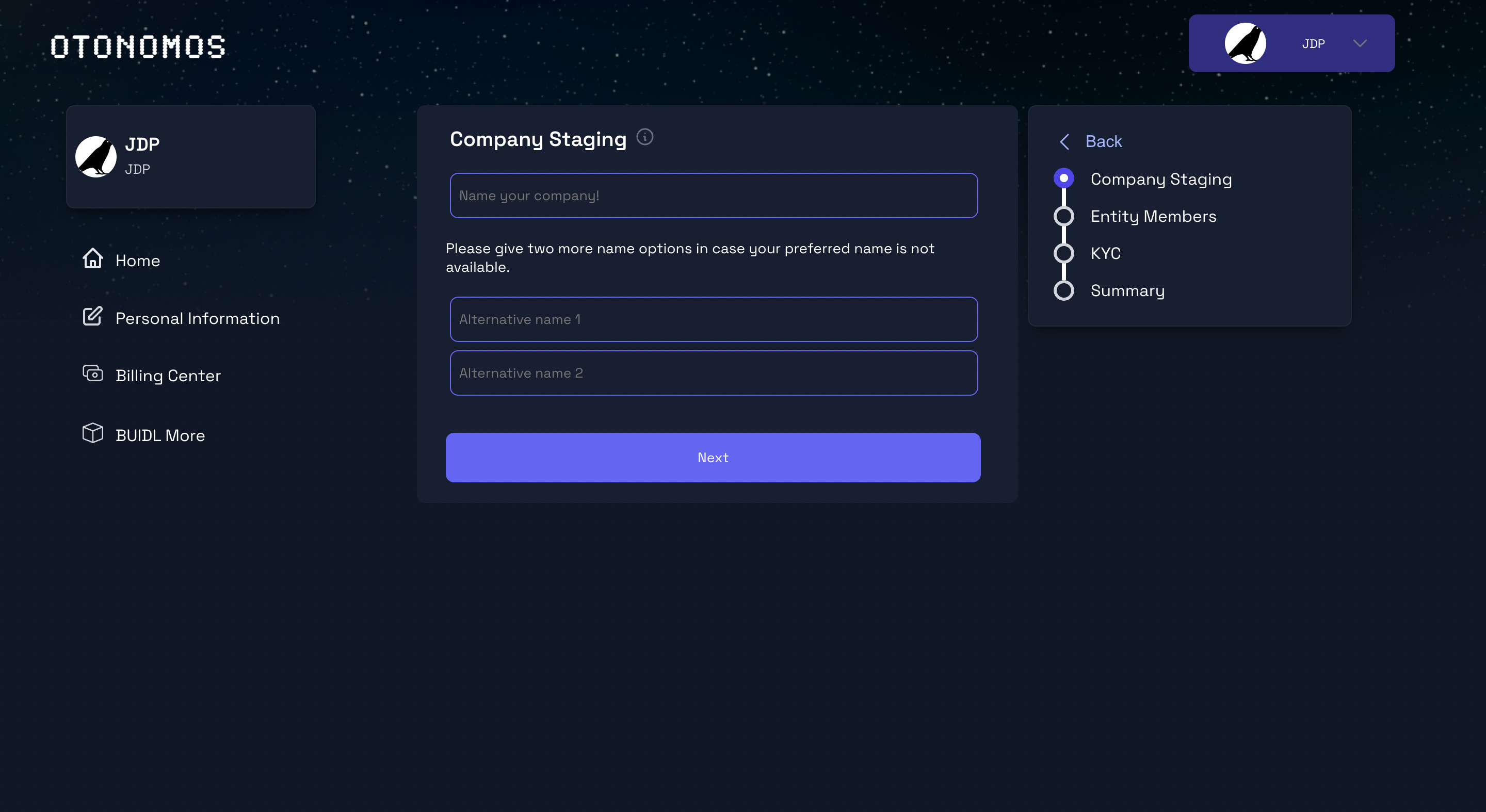
A progress bar to the right indicates where you are in the staging process.
Using your first preferred name as the staging name - in our example Doge and Frewns 😄 - you will now be asked if your company will only have one owner or multiple ones:
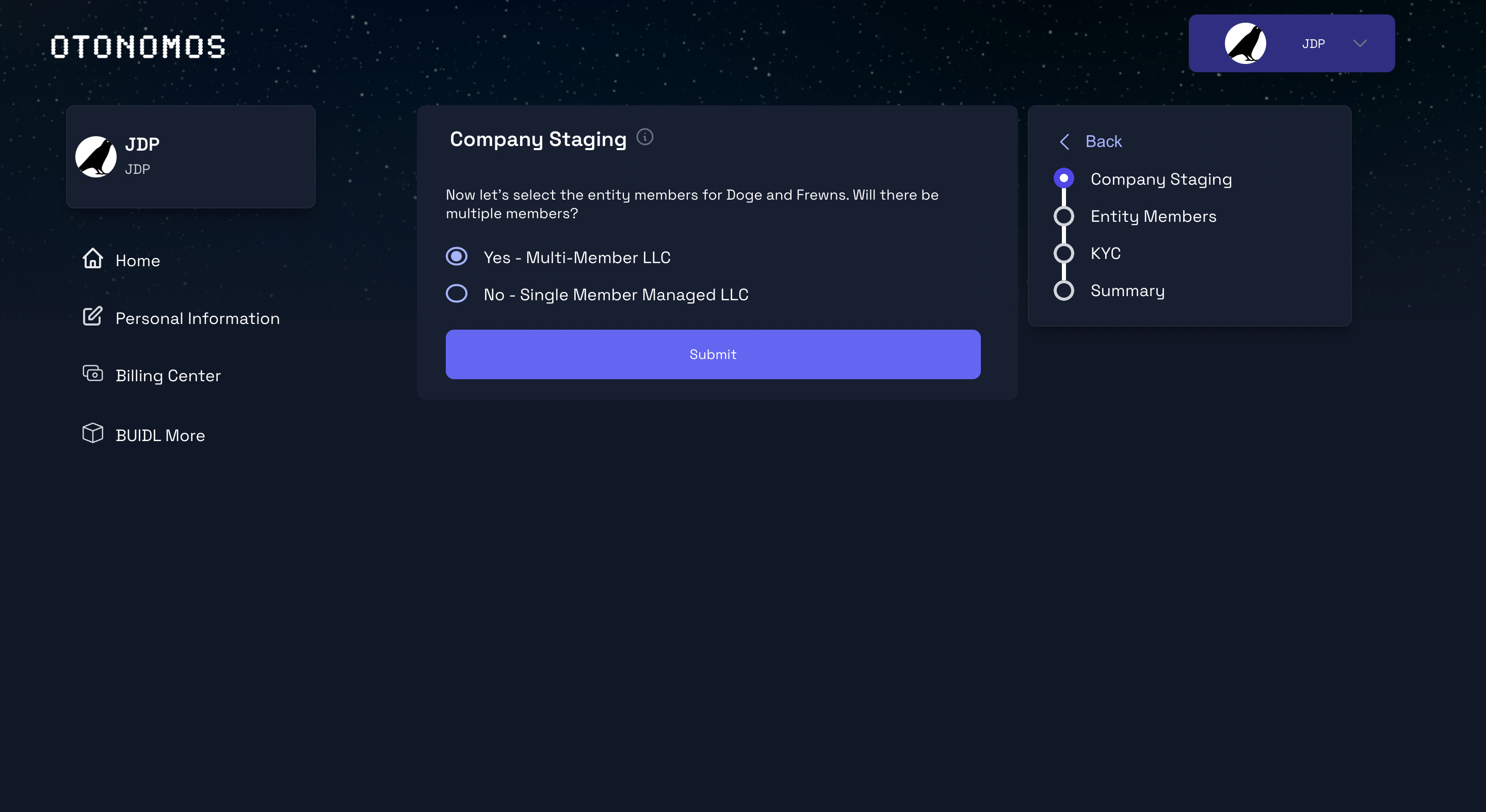
Note that we will check the availability of your company name in your order of preference. You will be notified if none of your preferred names are available.
The second stage then asks you to provide information about the owners of your new entity (called Members in the case of an LLC) starting with whether they are individuals or whether the shares in your new entity will in turn be held by another company:
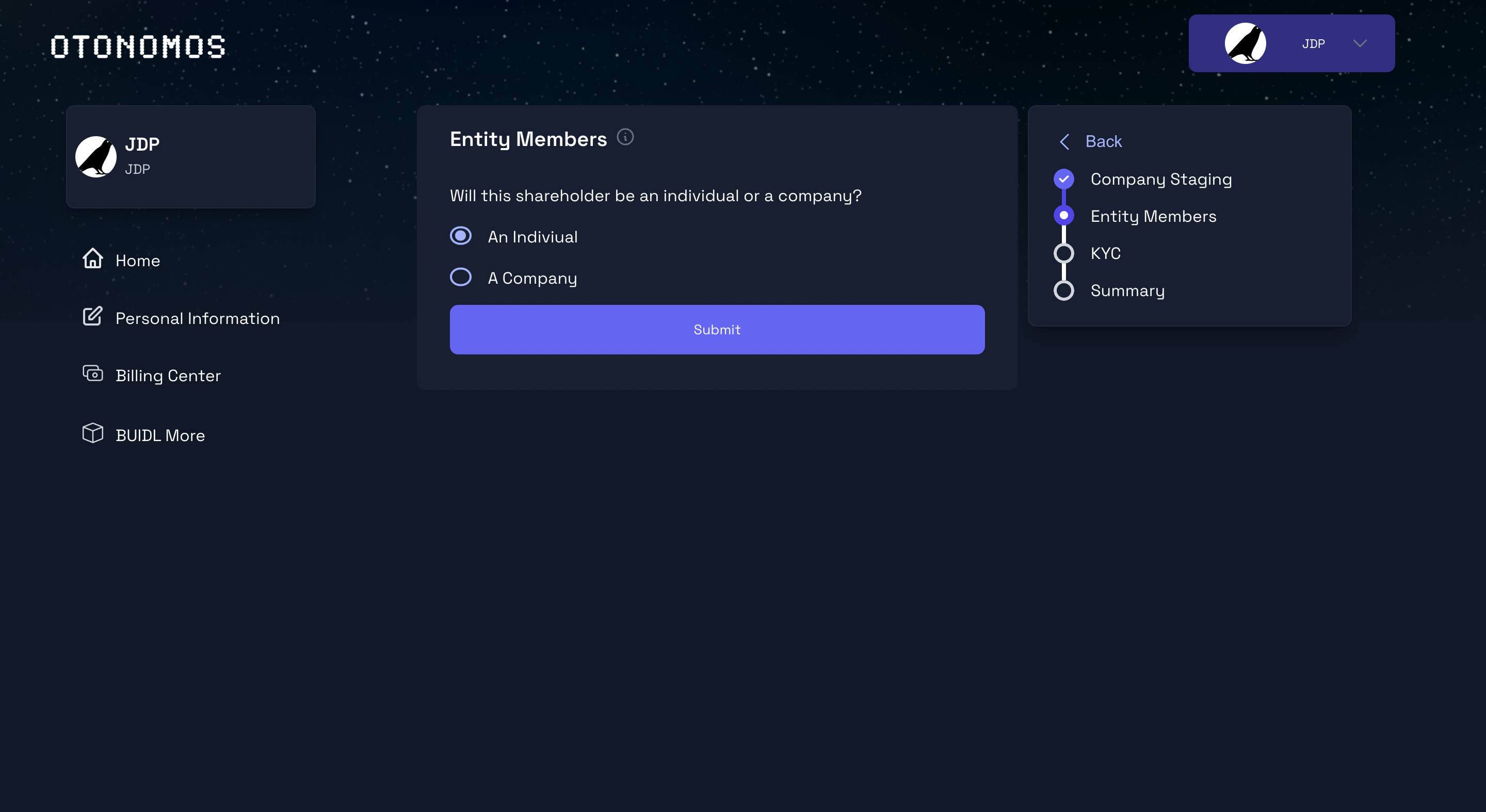
In our example in which the Members are individuals, the next screen lets you input their details. Typically, these will be your details if you ordered the company for your own project:
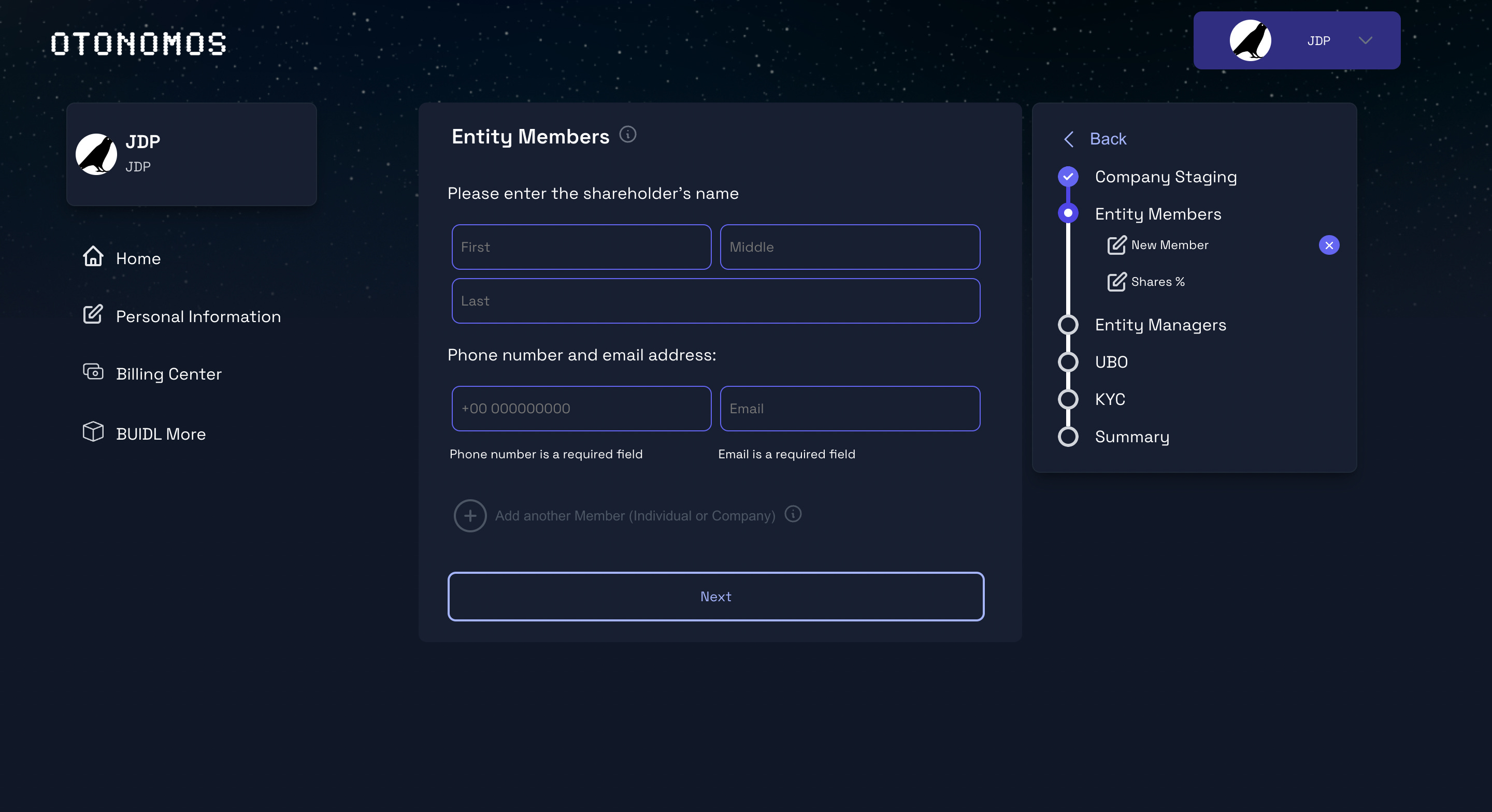
Use the “+” sign to add more Members:
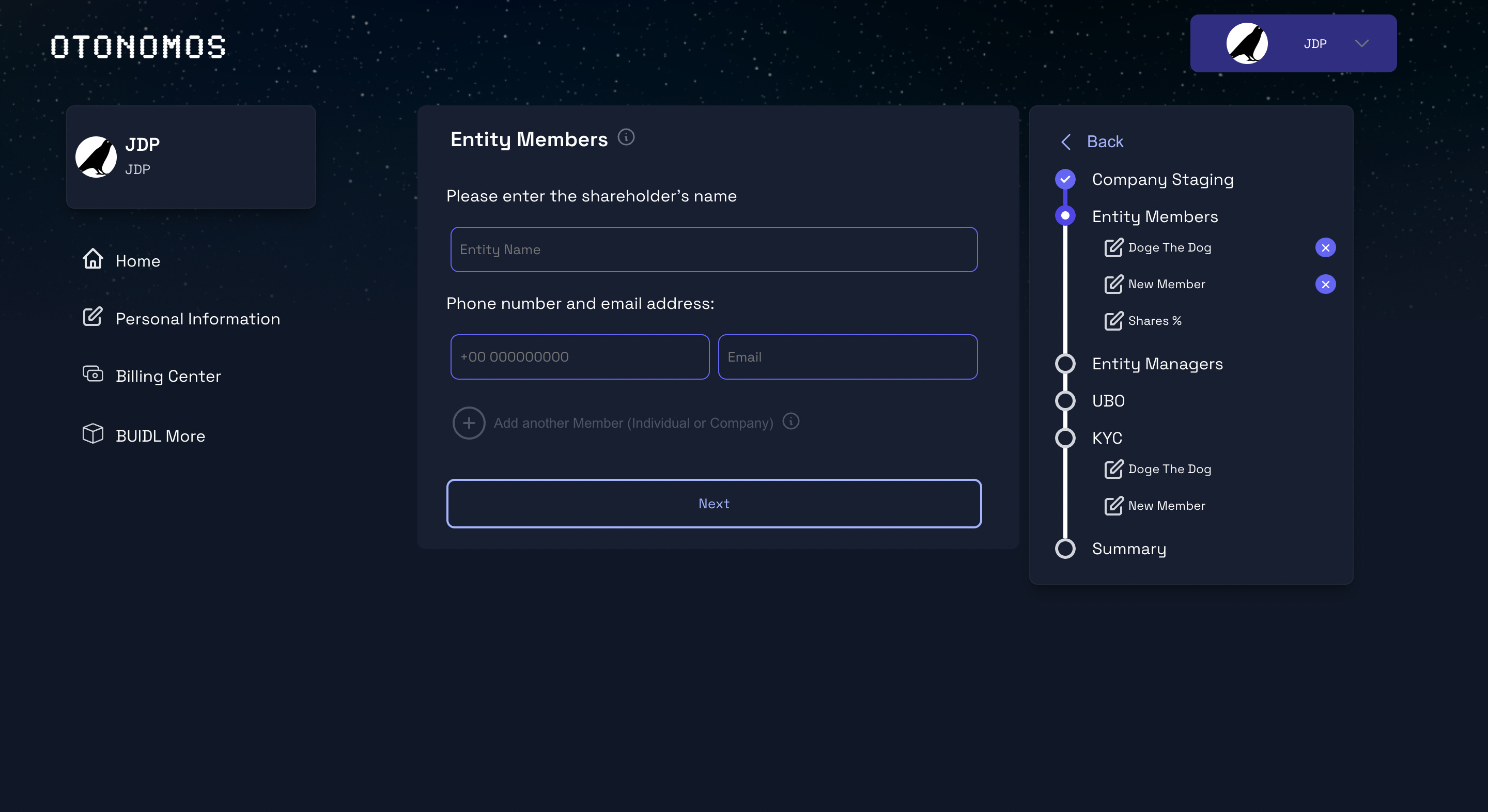
We made the staging guide to your right interactive so you can easily check what Members you added so far and edit their details or even remove them.
When you have multiple owners, self-evidently their total holding has to add up to 100%. Our staging engine will calculate this total for you on the basis of the respective % ownership you enter for each Member:

Here again you can change these % weights from the guide to your right.
Next, you will be asked to appoint a Manager (Director) for your entity. Our staging engine automatically serves up the names of your Members as in most instances, one of the Members will also be the Manager of your entity:
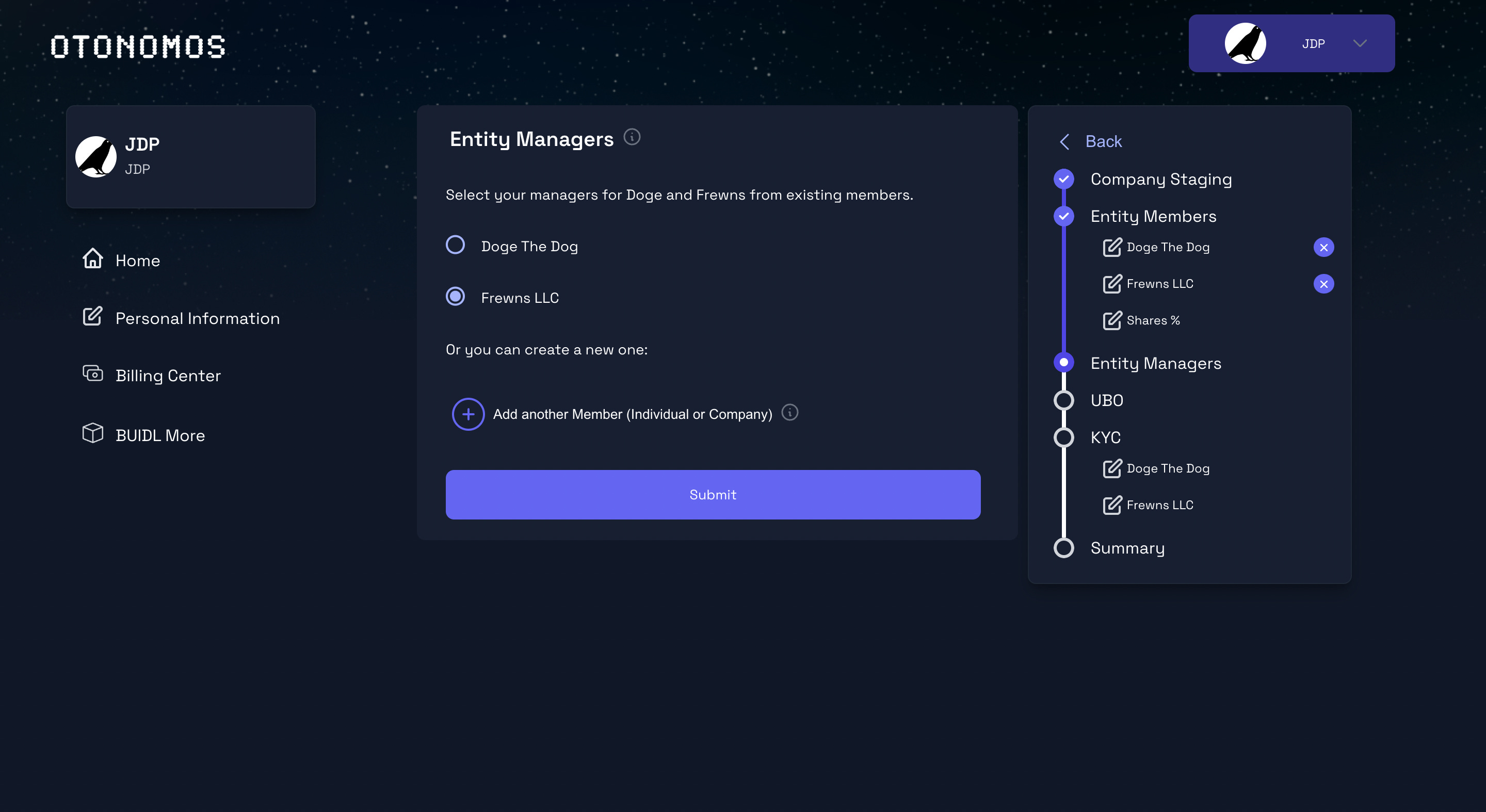
If you add a new name as Director, you will be asked to provide their details. In a next iteration of our staging engine, you will be able to ask Otonomos to provide a Nominee Director for your entity and make payment for our Nominee services then and there, together with other add-ones you may need.
Document upload
Only now will you be asked to upload the required Know-Your-Customer documents.1
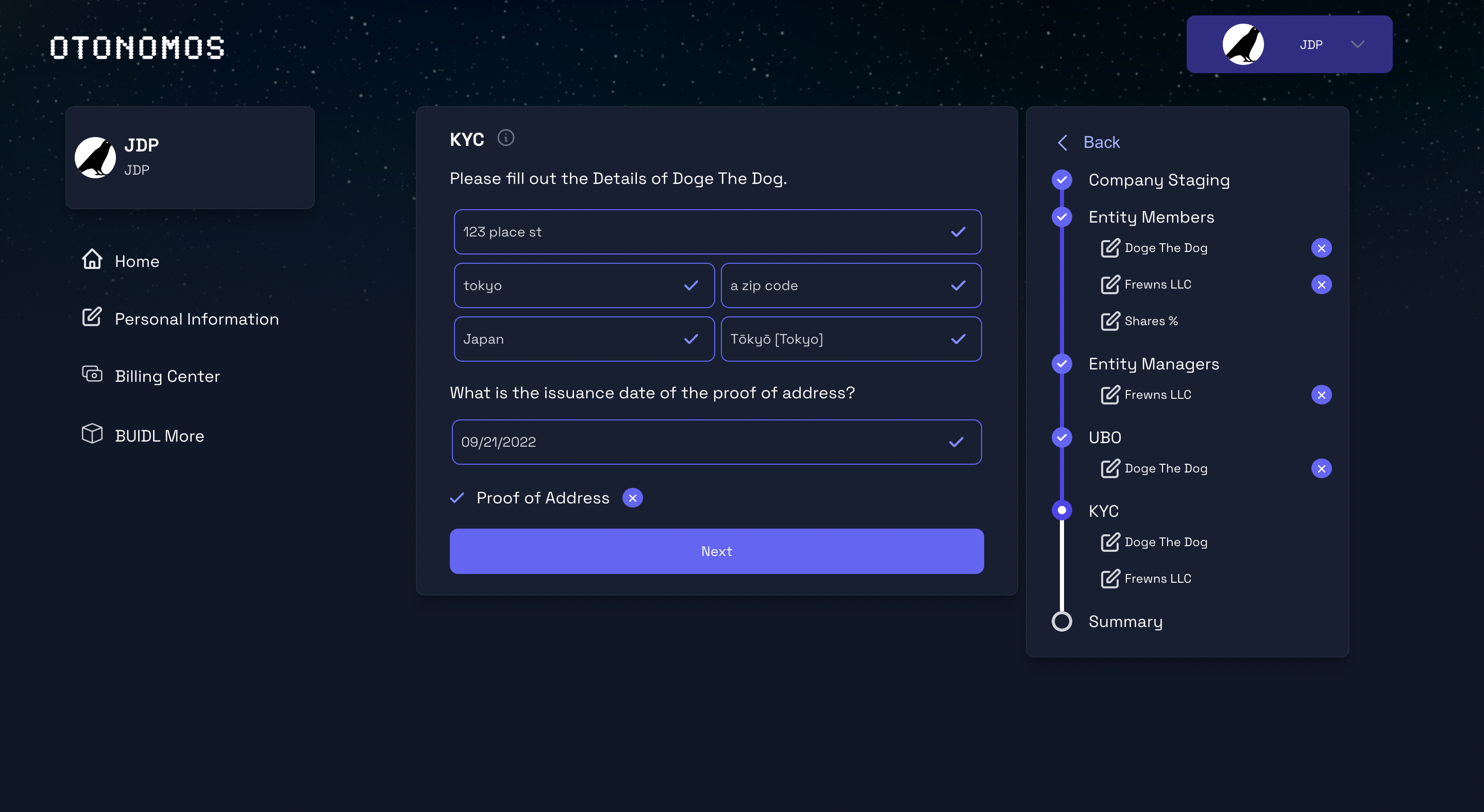
We made sure the upload is secure and your personal data is protected. Otonomos does not in any way sell or monetize your data and is fastidious about protecting identity and personal information.
A second KYC panel requires you to provide personal information and upload a copy of ID. The info icons give more detail as to what is specifically required:2
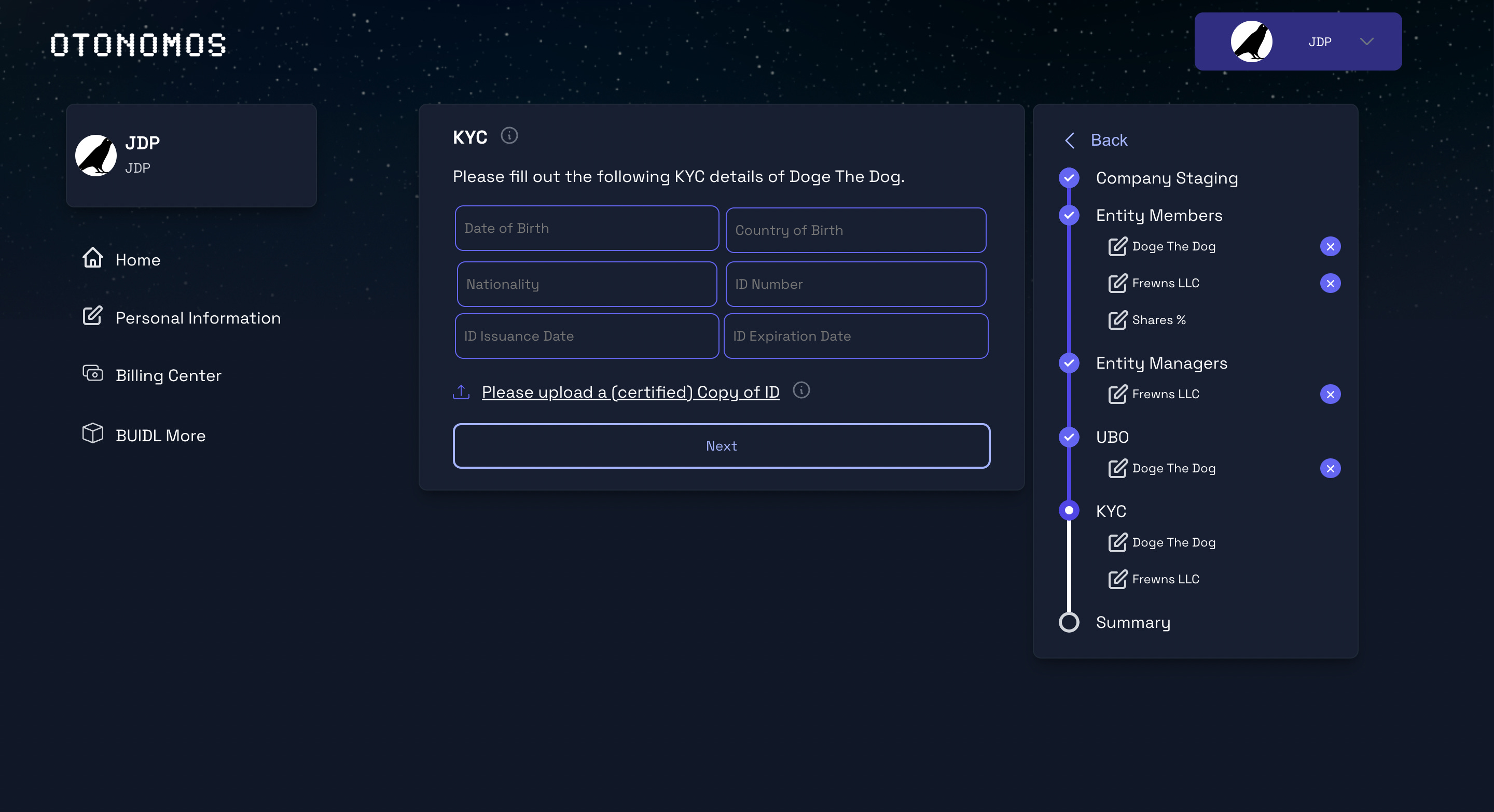
If the Member is an entity, we need its company details. Most clients who use entities rather than hold shares in personal name will have the bundle of documents related to their holding entity at hand:

Summary screen
The next screen provides a handy scrollable summary:
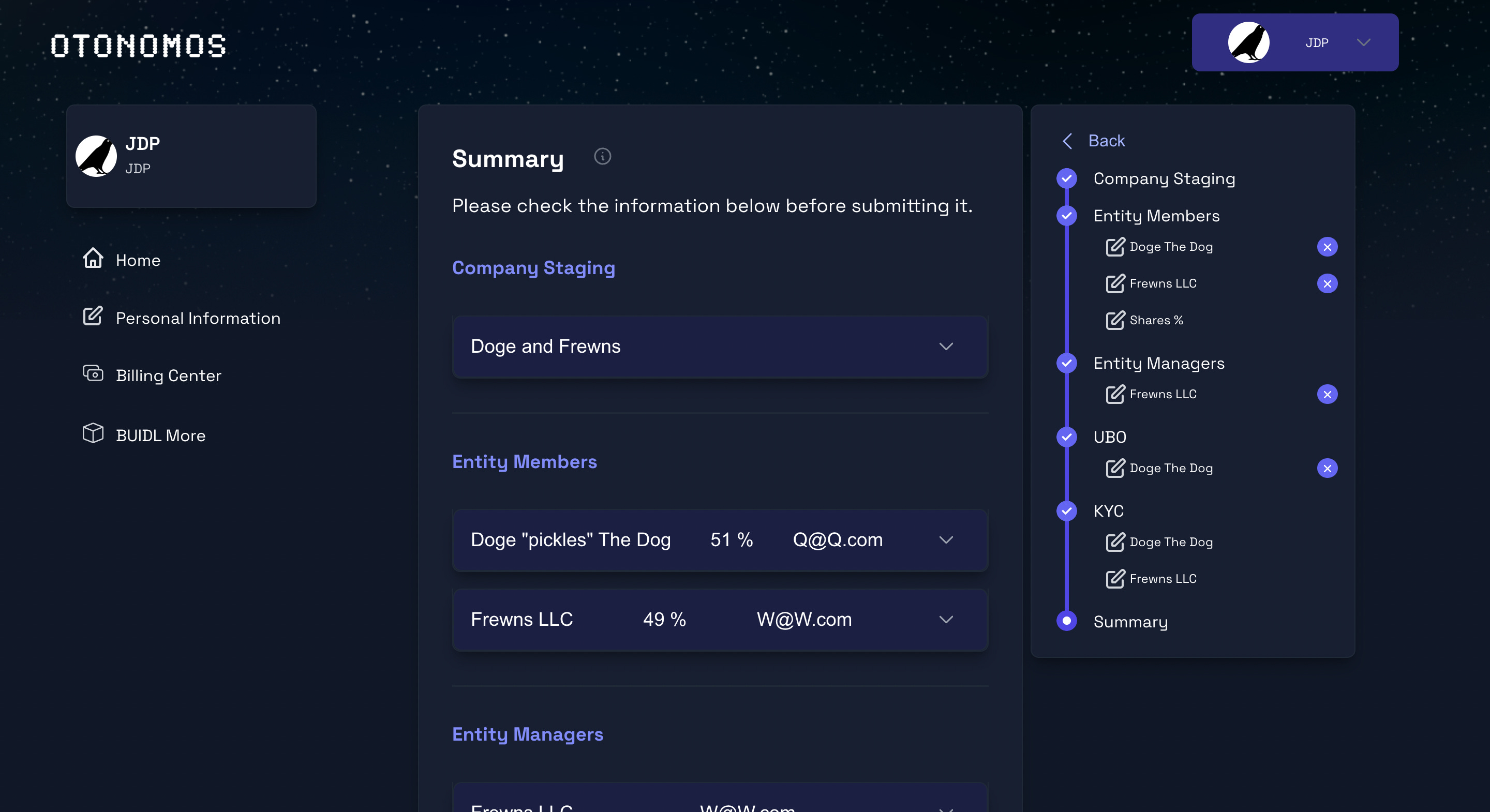
All of the details can still be edited, which will bring you back to the stage where you were initially asked to enter your information. The staging pane to your right will locate where you are at each stage.
When everything looks ok, just click “Submit”. You’ll be asked to agree to our T&Cs before you can proceed:
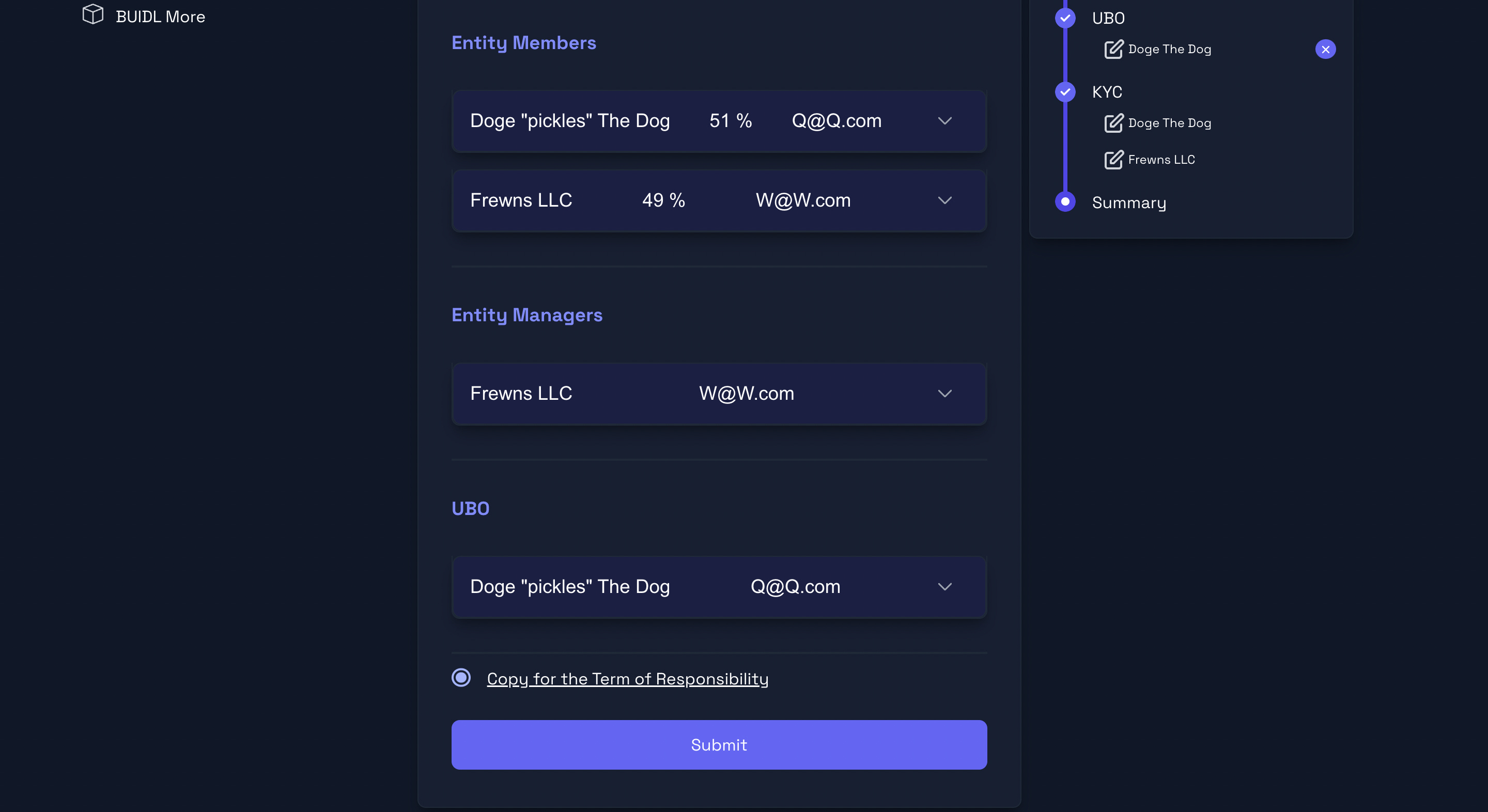
Your company is now staged and should be live within 48 hours. You will find all the corporate documents for your new entity when logging in to your Otonomos dashpanel.

> Join our Otonomos Intel Swap telegram group to exchange tips and ask questions from fellow users and the Otonomos team, or simply chat (with humans!) clicking the web chat icon bottom right.
This information is for internal due diligence purposes and will not be shared externally. Note that for now, there is no requirement to share Ultimate Beneficial Owner information with any U.S. authorities (except as part of court discovery or regulatory action) however, recognizing that this has left LLCs open to illicit use incl. “straw man” structures, FINCEN is introducing a UBO declaration by 2024. ↩
Lots of clients are confused about the concept of Ultimate Beneficial Owner or UBO. UBO is essentially what it says: on top of every entity stack, there is ultimately a physical person, no matter how high you stack entities. For instance, an LLC Member may be another LLC owned by an offshore entity which in turn is owned by an offshore holding. The UBO declaration would go all the way up the chain and ask for who ultimately controls the top level entity, and that always is an individual or a group of individuals, or beneficiaries in the case of a trust or foundation. The more layers to the wedding cake, the more convoluted the KYC so keeping it simple is probably advisable. ↩

